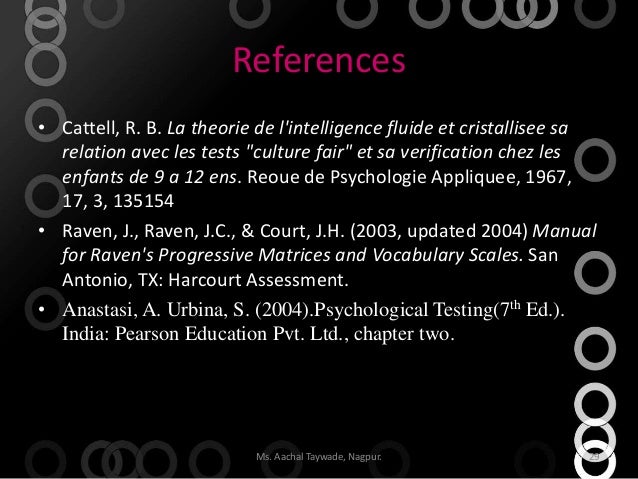Manual For Raven Progressive Matrices And Vocabulary Scales Section 1

• • • Abstract The Raven Progressive Matrices (RPM) tests measure “general cognitive ability” or, better, eductive, or “meaning making,” ability (Raven, Raven, & Court, 1998a,2000). The term “eductive” comes from the Latin root educere, which means, “to draw out.” The basic version of the test, known as the Standard Progressive Matrices (or SPM), consists of five sets of items of the kind shown in Figures 11.1 and 11.2.
Pump It Up Exceed Ps2 Torrent. Within each set, the items become progressively more difficult. At the beginning of each set, the items, although easy again, follow a different logic. The sets in turn become progressively more difficult. The five sets offer those taking the test five opportunities to become familiar with the method of thought required to solve the problems. In addition to the Standard series, there is the Coloured Progressive Matrices (CPM), which is designed to spread the scores of children and less able adults and the Advanced Progressive Matrices (APM), developed to spread the scores of the top 20% of the population.
Raven's Progressive Matrices (often referred to simply as Raven's Matrices) are of abstract, originally developed by Dr. Raven in 1936. In each test item, the subject is asked to identify the missing item that completes a pattern. Many patterns are presented in the form of a 4x4, 3x3, or 2x2, giving the test its name. Versions The matrices are posed in three different forms for participants of different ability: • Standard Progressive Matrices: These were the original form of the matrices, first published in 1938. The booklet comprises five sets (A to E) of 12 items each (e.g., A1 through A12), with items within a set becoming increasingly difficult, requiring ever greater cognitive capacity to encode and analyze information.
All items are presented in black ink on a white background. • Coloured Progressive Matrices: Designed for younger children, the elderly, and people with moderate or severe, this test contains sets A and B from the standard matrices, with a further set of 12 items inserted between the two, as set Ab.
Raven's Coloured Progressive Matrices. Raven's Manual Section 1. Essential for use with all Progressive Matrices and Vocabulary Scales Raven's Manual.
Most items are presented on a coloured background to make the test visually stimulating for participants. However the very last few items in set B are presented as; in this way, if a subject exceeds the tester's expectations, transition to sets C, D, and E of the standard matrices is eased. • Advanced Progressive Matrices: The advanced form of the matrices contains 48 items, presented as one set of 12 (set I), and another of 36 (set II).
Items are again presented in black ink on a white background, and become increasingly difficult as progress is made through each set. These items are appropriate for adults and adolescents of above-average intelligence. In addition, so-called 'parallel' forms of the standard and coloured progressive matrices were published in 1998. This was to address the problem of the Raven's Matrices being too well-known in the general population. The fact that testees have grown increasingly experienced with the Ravens over the last 60 years could explain the increases in scores of around 10 IQ points per generation (see ). Items in the parallel tests have been constructed so that average solution rates to each question are identical for the classic and parallel versions.
An extended form of the standard progressive matrices, Standard Progressive Matrices Plus, was published at the same time, offering greater among more able young adults. The, a, accepts the Advanced Progressive Matrices form for one of their admission tests. They require a score of at least 32 out of 36 on or before December 31, 1999 on the RAPM. The (ISPE) similarly accepts the RAPM as a qualification for admission. Underlying factors According to their author, Raven's Progressive Matrices and Vocabulary tests measure the two main components of (originally identified by ): the ability to think clearly and make sense of complexity, which is known as eductive ability (from the Latin root 'educere', meaning 'to draw out') and the ability to store and reproduce information, known as reproductive ability. Ad ─ Info & Options Your call today will be answered by one of our paid sponsors. Additionally, MentalHelp.net hosts a comprehensive so that you can view and contact any treatment facility directly within the U.S., whether they are sponsors or not.